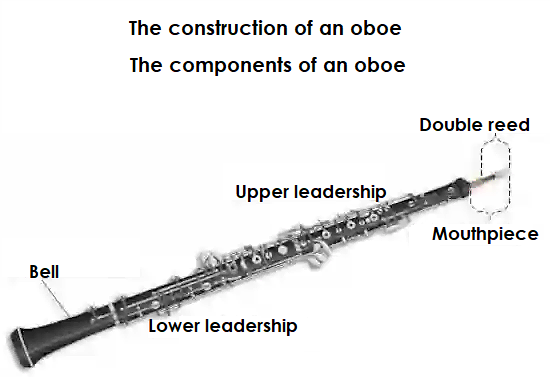Construction and function of the oboe - Philipp Dangas
Construction and function of the oboe
Oboes are made of grenadilla, boxwood or ebony, instruments made of rosewood, rosewood, cocobolo or other exotic hardwoods are less common. Ebonite or Plexiglas oboes are particularly in demand for use under extreme climatic conditions, as the wood runs the risk of tearing. The instrument has a conical bore and overblows into the ctave.
The mouthpiece of the oboe, called "pipe" for short, is made by the oboist from the internodes of the reed. Most oboists make their own reed mouthpieces, for which there are excellent measuring tools and machines today. The player holds the instrument diagonally downwards like the flutes. However, in contrast to the beaked flutes, the tube widens from the mouthpiece towards the sound opening. The main tube can usually be dismantled into 2 parts. The bell can also be removed as an independent part. The complicated handle and folding mechanism is located on the main tube of the instrument. 2 octave keys are provided for the generation of the overblown tones.
Download size: 425 kilobytes
Table summary of the functional principle of the woodwinds
In this following table, the key data for the functional principle of the woodwind shown. Mouthpieces, reeds, tone holes and flaps briefly described. In addition, the term overblowing technique is defined.

The construction of an oboe in large scale
The components of an oboe
- Double reed
- Mouthpiece
- Upper leadership
- Lower leadership
- Bell
Internal search function
| Name | Value | Delete |
|---|